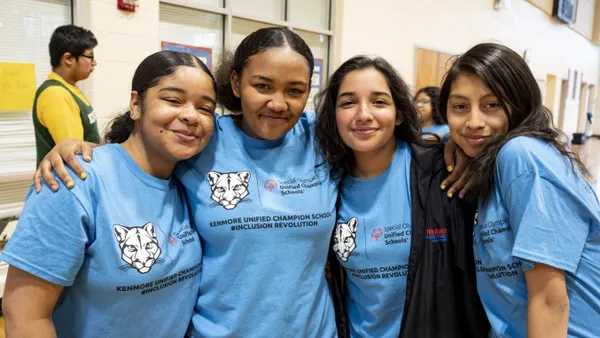Dive Brief:
- With a growing need to address the skills gap, Scott Stump, U.S. assistant secretary for career, technical and adult education, spoke Monday about how states and local agencies can create stronger workforce pipelines by leveraging three major federal education laws:
- The Every Student Succeeds Act (ESSA)
- The Carl D. Perkins Act (Perkins V)
- The Workforce Innovation and Opportunity Act (WIOA)
- During a panel at the National Association of State Boards of Education (NASBE) conference, Stump and Susan Bowles Therriault of the American Institutes for Research (AIR) described how coordinating implementations across these programs – including K-12 initiatives, apprenticeships, vocational education, and career and technical education (CTE) – can lead to more effective pipelines that start before high school and push students toward paths other than a four-year college degree.
- Stump added that aside from policymaking, changes in the dialogue surrounding CTE can also go a long way in strengthening the pipeline. That means instead of asking high-schoolers what they're interested in, these conversations should start in middle school, and CTE professional development for teachers can train them to view education as more than just a step toward a four-year college diploma.
Dive Insight:
While unemployment numbers might be low, and public high school graduation rates are at an all-time high, there's still a growing skills gap. Many employers are struggling to find workers to fill their empty positions. Experts have connected this issue to a number of areas, including education, and have said that disconnects within the field aren't properly preparing students for post-graduate careers.
Stump said part of this issue comes from the fact that there's a huge emphasis placed on students to go straight to a four-year college after high school. But in many cases, he said, "that’s led to student debt and students without degrees, because they didn’t know why they were going in the first place." Not only is an expensive degree an obstacle for a significant population, but some college students graduate without the right courses to enter a field – and some don't even know what field they want to enter.
As a result, Stump is one of a number of education experts to stress the need to "continue to rethink education" and push harder for CTE. But with a cloud of federal regulations hanging over state and local officials' heads, it can be difficult to figure out how to comply with each while using them to strengthen the pipeline.
Each regulation serves to achieve a different goal. ESSA pushes for K-12 accountability and challenging college and career readiness standards, while Perkins V focuses on secondary and postsecondary CTE. WIOA works to help out-of-school youth or adults seeking jobs by matching them with the education, training and support they need. But by leveraging funds from each program and getting them to align, agencies can coordinate stronger, more efficient strategies to address the problem at hand.
But administrators and educators don't have to tackle this issue alone. By holding discussions and workshops with each other and with policymakers, officials can work to rethink the programs in place. Additionally, organizations like AIR have resources to help guide individuals through this process. AIR's College and Career Readiness and Success Center, for example, published its analysis of ESSA, WIOA, Perkins V and the Individuals with Disabilities in Education Act last month as an online resource for states and local agencies to better determine how to fund across the three regulations and support a stronger school-to-workforce pipeline.














